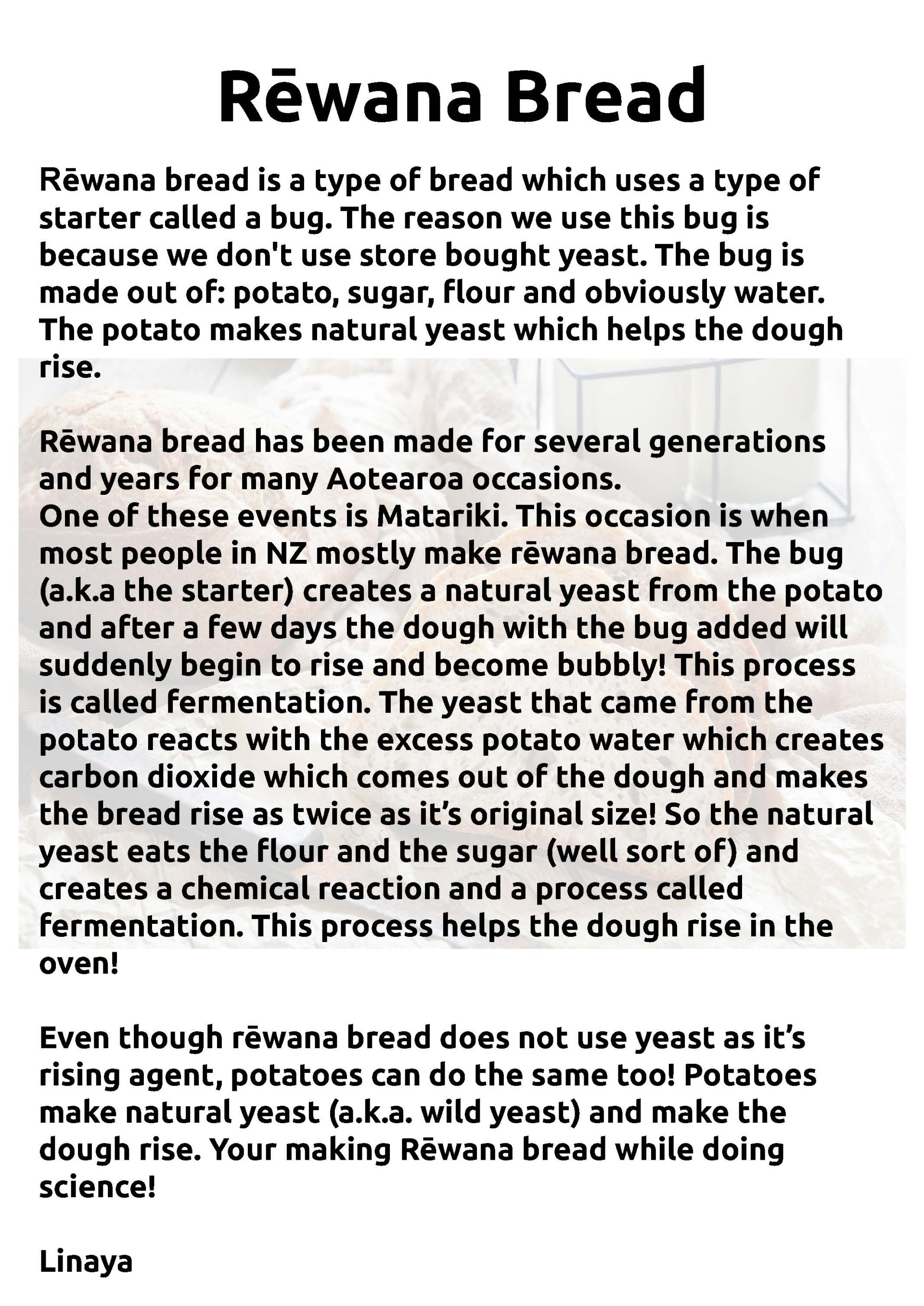Students investigated the science behind rēwana bread - a traditional Māori bread made with a natural potato starter, known as a bug (similar to sourdough bread).
Rēwana bread is made from four simple ingredients: flour, potatoes, sugar, and water. The science behind it is explained by students:
The potato makes natural yeast which helps the dough rise
The yeast eats the sugar and makes carbon dioxide which makes bubbles in the bread, helping it rise.
You can use potatoes to make yeast without buying it.
This learning was part of the writing programme, where students wrote scientific explanation pieces about how rēwana bread rises. To support them to write clear, well structured paragraphs, we used WAGOLL exemplars (What A Good One Looks Like), co-constructed vocabulary, and sentence scaffolding.
Students used formal language, focused on facts only, and included topic-specific vocabulary to explain how the rēwana bug works. They practiced organising their ideas clearly within structured paragraphs including introductions, main paragraphs and conclusions using scientific reasoning to support their explanations.
It was hard to write what we learned in our own words and not copy what we read. We had to use the keywords to make our own sentences.
Publishing their writing gave students a sense of pride in sharing their scientific learning. With Matariki approaching, students were excited to share what they had learned.
The science behind it is that the carbon dioxide bubbles get trapped in the dough so it rises.
The yeast eats the sugar to make bubbles that help the dough grow.







Comments
No one has commented on this post yet.